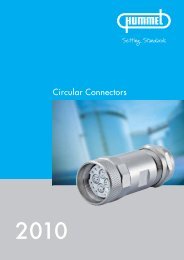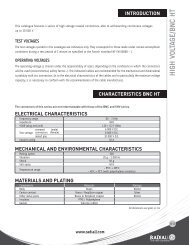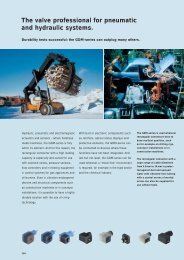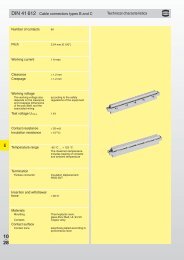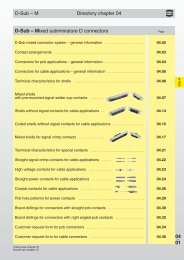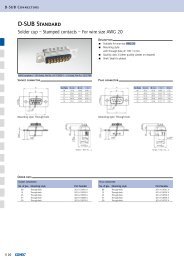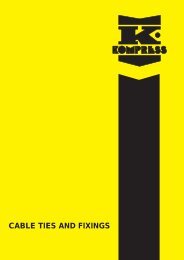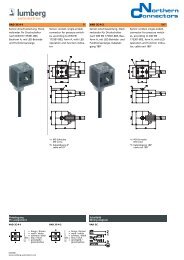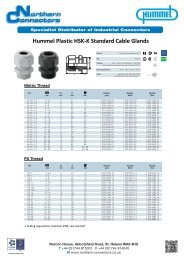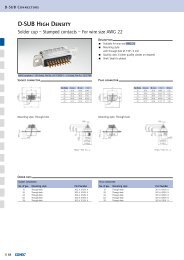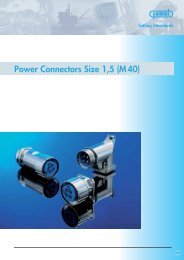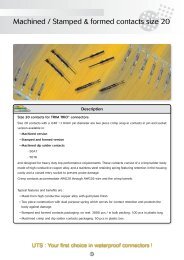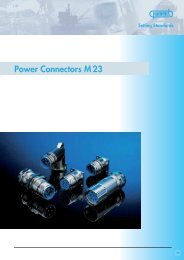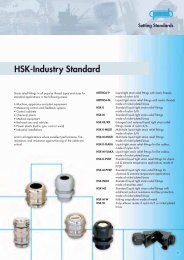HARTING - Northern Connectors
HARTING - Northern Connectors
HARTING - Northern Connectors
Create successful ePaper yourself
Turn your PDF publications into a flip-book with our unique Google optimized e-Paper software.
Terminations<br />
Press-in technology<br />
Phase 1<br />
General<br />
information<br />
The processing of press-in connectors can be divided into 3 phases,<br />
containing both mechanical and metallurgical operations:<br />
1. Centering and placing of the termination pins<br />
Press die<br />
(Flat rock)<br />
The centering of connectors before pressing is important in<br />
order to prevent damage to the pcb and the termination pins.<br />
Centering can be omitted when connectors are pressed using<br />
a flat rock die.<br />
<strong>HARTING</strong> offers insert blocks for male connectors to make<br />
the centering of connectors unnecessary.<br />
Insert block<br />
Connector<br />
Multilayer<br />
pcb<br />
2. Pressing in the pins<br />
Phase 2<br />
In the press-in process the insertion force is continuously<br />
transformed into compression force. The resulting friction<br />
frees the contacting bars of insulating films. Superfluous<br />
plating (tin) is transferred within the plated through hole. A<br />
gas-tight connection of fresh non-oxidised metal surfaces is<br />
obtained.<br />
3. Obtaining the final position<br />
The press-in operation should be terminated as soon as<br />
the connector obtains its final position on the pcb to avoid<br />
unnecessary compressive stress. The press-in machines<br />
of <strong>HARTING</strong> feature automatic termination of the pressin<br />
operation independant of pcb thickness and surface<br />
properties.<br />
Phase 3<br />
The entire dynamic press-in process is characterised through<br />
changes of the press-in force that can be statistically evaluated.<br />
<strong>HARTING</strong> records the changes of force with the help of special<br />
software. This is an important step towards permanent process<br />
control and documented manufacturing data.<br />
00 .<br />
24<br />
The -zone is based on the industry renowned needle eye<br />
technology. Its special design allows for compensation of tolerances<br />
of pcb surface properties (eg. superfluous tin plating). The excessive<br />
material is displaced within the plated through hole, whereby a gastight<br />
and corrosion resistant electrical connection is assured.



